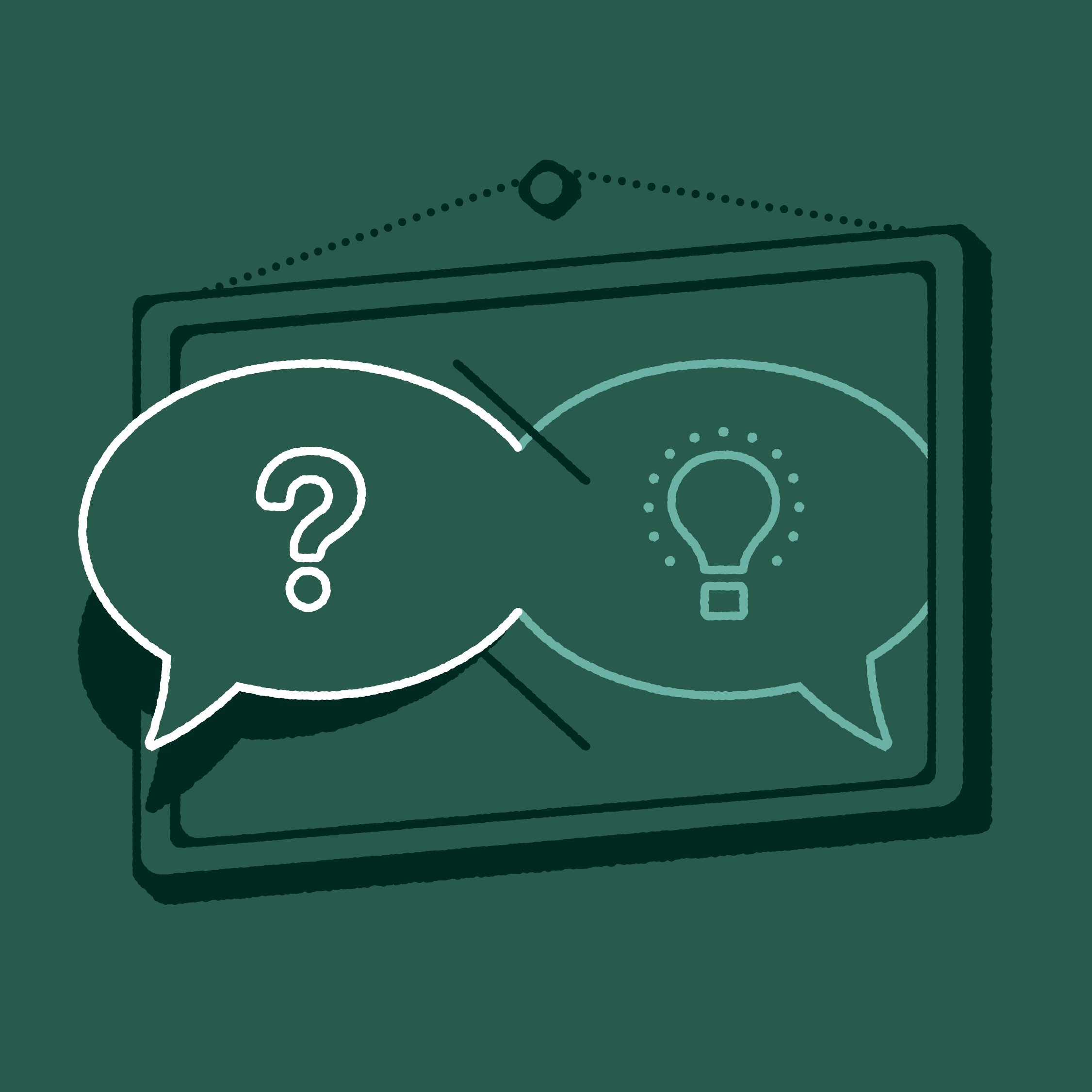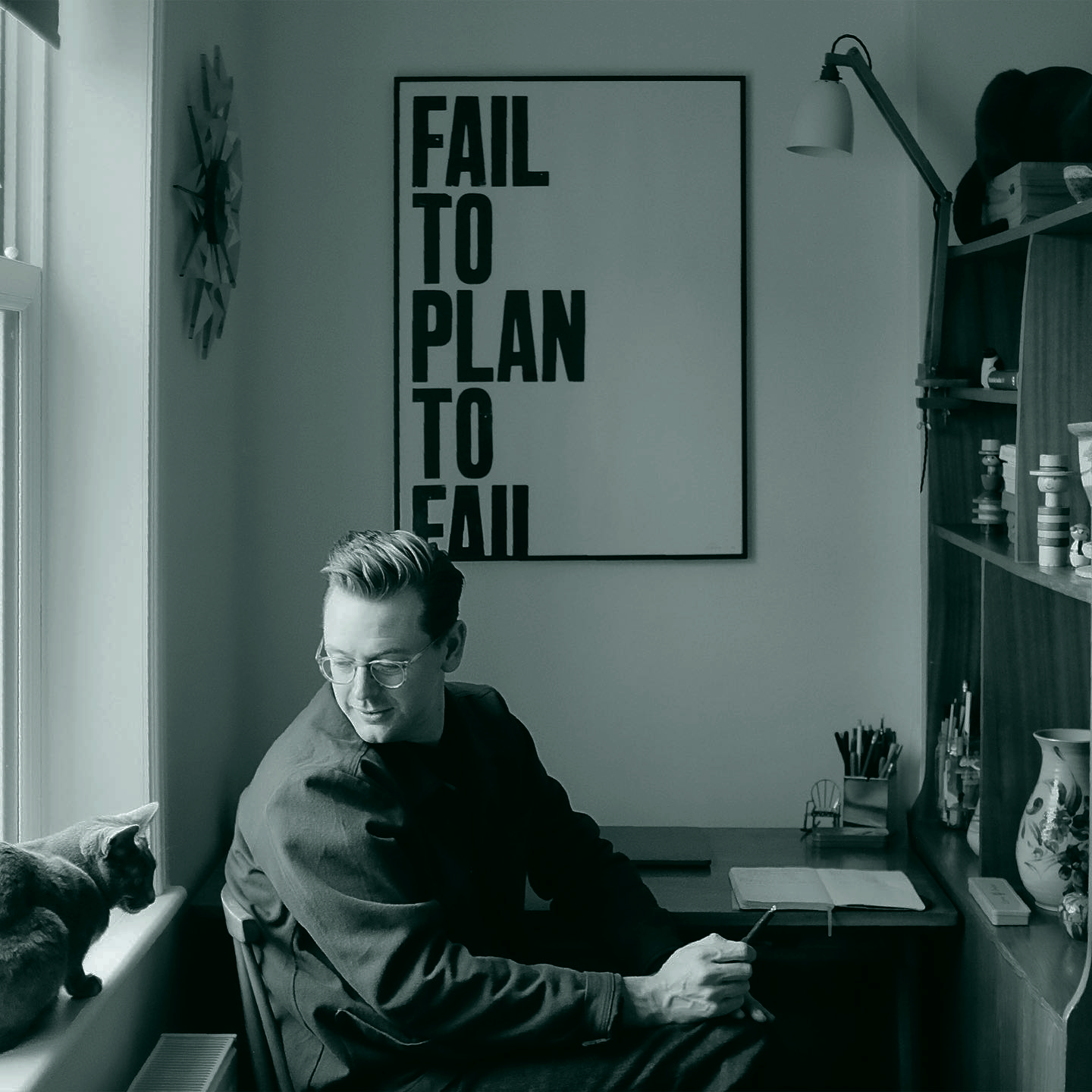Why I Talk To Myself, And You Should Too

I’m writing to you — well, talking to you – from a voice memo on my phone. You are one of many people that I talk to often.
What I’m doing is an exercise I first started over 15 years ago at university – an exercise in talking to myself. The reason I do it is to solve problems. I do this by speaking them through with different personas: my wife’s 96-year-old grandfather; my old course lecturer; my nephew, etc. For each one I adopt a different conversational style, each one helping to shape and refine the problem, the idea, and ultimately the solution.
With mobile phones making it no longer socially awkward to be talking to wireless headphones, or holding the base of your phone up to your mouth while out and about, it couldn’t be easier to talk to yourself.
Below are six reasons why I find talking to myself not only helpful, but a cathartic part of the creative process.
Why talk to yourself
Reason 1: Momentum
We’ve all at times been tied to a desk, falling prey to procrastination and hoping the sheer hours alone will help enlighten us to the issue we’re trying to solve. How often do you find it works?
Staring at a blank page is intimidating — removing this from the equation is liberating.
Reason 2: Conversation
The way you speak (as opposed to how you write) is incredibly important, as it allows your brain to say exactly what it wants to say. This brings warmth, energy and the delightful clumsiness of everyday conversation into your process. I also find the best solutions have a human sentiment at their core; having a conversation helps you get to this.
Reason 3: Silence
Our brains are often a symphony of daily tasks — by talking to yourself, it briefly silences these other intruding thoughts, and silences the cacophony of noise that might be distracting you from really interrogating the issue.
Reason 4: Speed
Our brain has approximately 100 billion neurons in it and is capable of processing certain types of information within as little as 13 milliseconds. Unless you’re an octopus, it is unlikely your hand can keep up.
Equally, with writing and drawing being physical acts they can be tiresome. You may find yourself cutting sessions short, just as you are on the brink of a solution. Put the pen down for a moment and enjoy the freedom that your wandering brain allows.
Reason 5: Convenience
How often do you find yourself in a routine? Taking your child to nursery? Traveling to work? Lunch breaks? These are often moments we tend to numb ourselves with distraction.
Try slotting this exercise into these routines. Listen back to them when you’ve set time aside, and presto you’ve bought yourself time back. Also you can do it anywhere, and you should! Often the best ideas pop into your head when your brain is idle. Go with it, slap record on your phone and talk it through. You'll be surprised what you find when you listen back.
Reason 6: Self
A slight aside – but perhaps the most important – is the sense of checking in with yourself. Ask yourself how you’re feeling to recognise signs you might otherwise brush off when your brain gets too occupied by the rhythm of the day.
It's incredibly rebalancing if you’re having an off day, and have an understanding of why you’re feeling like that. Record yourself in times of joy, celebration or positivity. Nothing brings an endorphin hit like hearing your own excitable voice communicate in a positive moment.
Time to talk to yourself
I would like to underline this isn’t a replacement for real, human interaction. There is nothing more valuable than speaking with people, and building a group that you feel is nurturing, challenging but importantly safe to discuss themes and subjects with.
I also recognise this approach isn’t for everyone, though I encourage you to give it a go and take the elements that resonate with you. You’ll be surprised how natural it becomes after a few goes.

How to talk to yourself, successfully
When trying this for the first time it’s important not to force it. If it’s not coming to you naturally then It will only tarnish the exercise and stop you using it in the future. Give it a go and keep trying it in different ways, situations and for different types of problems.
1. Set yourself up
Grab your phone or a recording device. Don headphones, if you want. Then find somewhere you’d be comfortable to start talking. Consider standing so you can move more, or heading out for a walk.
2. Pick a person (and pick the unexpected)
Try imagining this person in detail, how they respond, their mannerisms. Then begin as you would usually. You can imagine being on a phone call, or in conversation at work, in a coffee shop, or in their living room; the important thing is to choose an environment that makes sense. A place you’d normally talk to this person.
Sometimes an imagined person isn’t appropriate and you simply just want to record yourself. That works too.
3. Ask the The 5 Ws (and 1 H)
The 5 Ws and 1 H are the basics in any information-gathering, they are:
- Who?
- What?
- When?
- Where?
- Why?
- And importantly, How?
These are all open questions that can’t be answered with a simple ‘Yes or No’ and are the bait to gently persuade your mind to delve further.
4. Speak freely
Ask yourself questions. Repeat parts of your persona’s answers back as you record. Respond as the persona with phrases like ‘I know why you would feel like that, however I suggest that…[insert their suggestion]’ or ‘have you thought of it like.. [insert challenge or new perspective].
5. Simplify your language
Imagine you’re explaining your thoughts to someone with no knowledge or experience of the subject. Or a child. If you’re brilliant enough to speak in another language, do that too. The restriction of vocabulary helps refine your thoughts and language down further, making the ultimate solution one that’s digestible for the majority.
6. Listen back and pay attention
It’s time to listen. I mean really listening. It is incredibly powerful to hear the emotion in your voice. The words you use and, importantly, the words you don’t. Listen back for the cues; how long you pause for, how you emphasise words — all of this will be integral to help you rationalise your thoughts and communicate them powerfully, and with clarity.
7. Notice repeats and patterns
By listening back you may realise you’ve said the same thing slightly differently, repeated the same word or phrase. This is vital for making you step back from the canvas to see the full composition. The idea was there all along, you just didn’t see the patterns or connect the dots. If you get stuck, start again with the same line ‘the idea behind the project is this…’. Then repeat again.
8. Talk to other personas
As mentioned, I speak to different “people” as it is really important to have a diverse range to help you mould and shape exactly what you’re trying to say, each time sharpening the focus and the reason – especially with particularly chewy challenges. It’s your chance to break from your own agreeable echo and really challenge the curiosity and inquiry these people may bring.
A note to (your)self
Remember: don’t force it, if it’s not coming to you naturally then it will only hinder you from exploring this approach in the future.
As you get comfortable with the exercise you’ll find yourself doing it in different scenarios, even ones you feel uncomfortable in – a busy bus stop, a packed coffee shop. It all helps to add a different flavour to what you’re telling yourself.
Over time you’ll be able to gain clarity quicker, understand problems in a deeper way and challenge your ideas for better outcomes.
Written (spoken) during a walk to the park with my son Rudy.

About Chris
Chris is the Creative Editorial Director at The Guardian. In his career he has managed design teams, overseen the creation of many new publications and lead the rebrand.
Alongside this he has launched RoomFifty, an online shop that sells exclusive prints by the best contemporary illustrators and designers, and MakeRoom a platform that prints, packs and ships artwork, so artists can focus on what they do best.
He also finds the time to be part of the two piece punk/noise band Modern Technology.
Instagram: @chrisclarkecc
Website: cclarke.cc

Chris Clarke
Creative Editorial Director at The Guardian and co-founder of RoomFifty and MakeRoom
